
The history of printing is a captivating journey that traces humanity’s most transformative means of communication. Its development has not only revolutionized the dissemination of knowledge but has also significantly influenced social, cultural, and political landscapes across continents.
Early Beginnings of Printing
The origins of printing efforts can be traced back to Mesopotamia around 3000 BC, where cylinder seals were used to inscribe images onto clay. However, the most notable early form of printing was in China with the invention of woodblock printing during the Tang Dynasty (618–907 AD). This method involved carving the reverse of an image or text into a block of wood, inking it, and pressing it onto paper.
In 1040 AD, Bi Sheng, a Chinese inventor, revolutionized the process by creating movable type printing using clay characters. Each character was individually sculpted, baked, and then arranged to form a full page, simplifying the reproduction process and laying a foundation for future innovations.
The Gutenberg Revolution
Johannes Gutenberg’s inventions in the 15th century marked one of the most significant turning points in printing history. Around 1440, Gutenberg developed the movable type printing press, significantly improving upon previous methods. His most notable contribution was the introduction of the metal movable type and durable oil-based inks, which increased the speed and accuracy of the printing process.
The Gutenberg Bible, printed around 1455, showcased the possibilities of this groundbreaking technology and set a benchmark for mass book production. This leap in printing efficiency facilitated unprecedented access to literature and scholarly works, setting the stage for the Reformation and the Renaissance.
Expansion Across Europe
Following Gutenberg’s invention, printing technology disseminated rapidly throughout Europe. By 1500, there were more than 1,000 printing presses across the continent, contributing to the spread of ideas and standardization of texts. This era also marked the beginning of newspapers, pamphlets, and periodicals, allowing information to reach more people than ever before.
Some key figures in early European printing include Aldus Manutius in Italy, who pioneered italic types and portable books, and William Caxton, who introduced printing to England in the late 15th century. Their contributions further democratized knowledge and fostered the growth of an informed public.
The Impact on Knowledge and Society
The impact of printing on society is multidimensional. It played a crucial role in the Protestant Reformation by enabling the rapid spread of Martin Luther’s theses and other Reformist writings, challenging the Catholic Church’s authority. Similarly, the Renaissance was fueled by the increased availability of classical texts, which revived scholarly pursuits and cultural exchanges.
Printing also transformed education by making textbooks widely available, standardizing curricula, and creating opportunities for learning among a broader segment of society. It promoted literacy, while the proliferation of printed materials facilitated the intellectual movements of the Enlightenment, further advancing scientific progress.
Modern Printing Innovations
The journey of printing did not stop with the movable type. Throughout the centuries, innovations like lithography, the rotary press, and eventually offset printing continued to enhance efficiency and quality, making printing more accessible and affordable.
The digital revolution in the late 20th century introduced computer-to-press technologies, high-speed digital printers, and the capability to print on-demand. This modern era of printing allows for personalized printing solutions and has profoundly impacted industries from publishing to packaging.
Conclusion
From ancient seals to digital presses, the evolution of printing technology highlights humankind’s relentless pursuit of knowledge sharing. The ability to rapidly and effectively disseminate information has driven educational reforms, sparked revolutions, and connected societies globally.
The history of printing is a testament to the profound impact this technology has had on the spread of ideas and the advancement of human cultures, shaping the modern world as we know it.
The history of printing is a captivating journey that traces humanity’s most transformative means of communication. From ancient seals to digital presses, the evolution of printing technology highlights humankind’s relentless pursuit of knowledge sharing. 
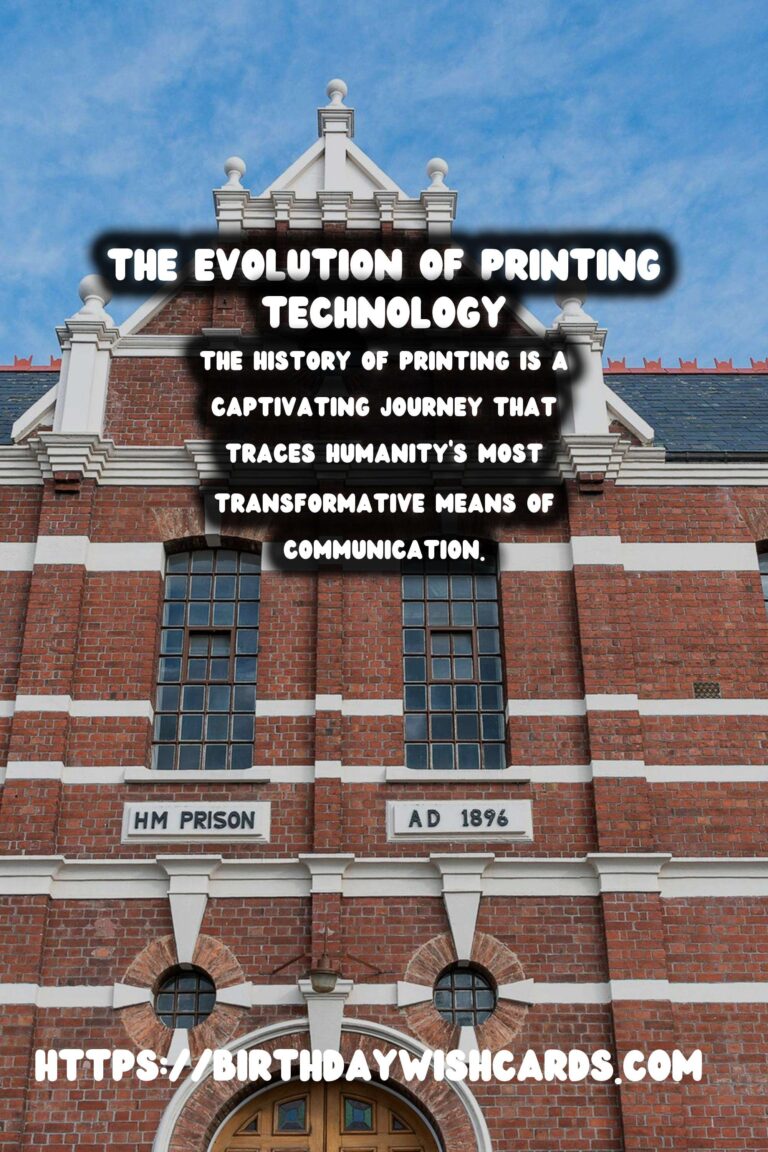
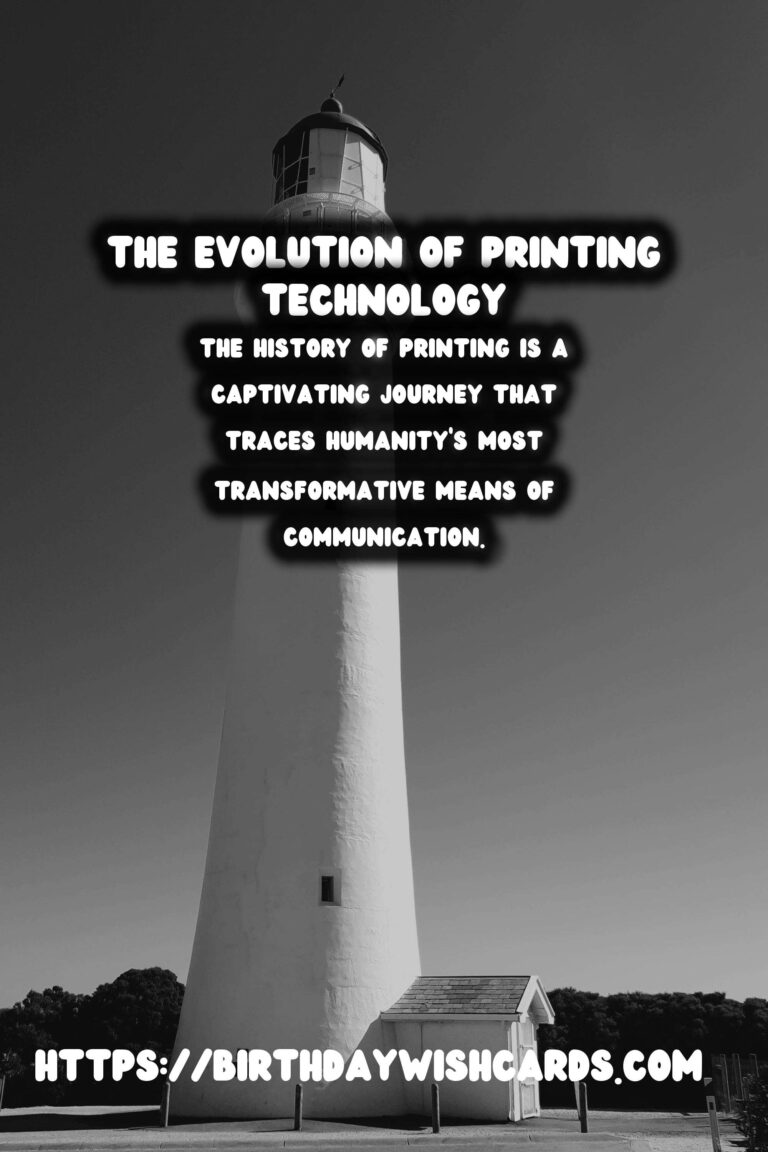

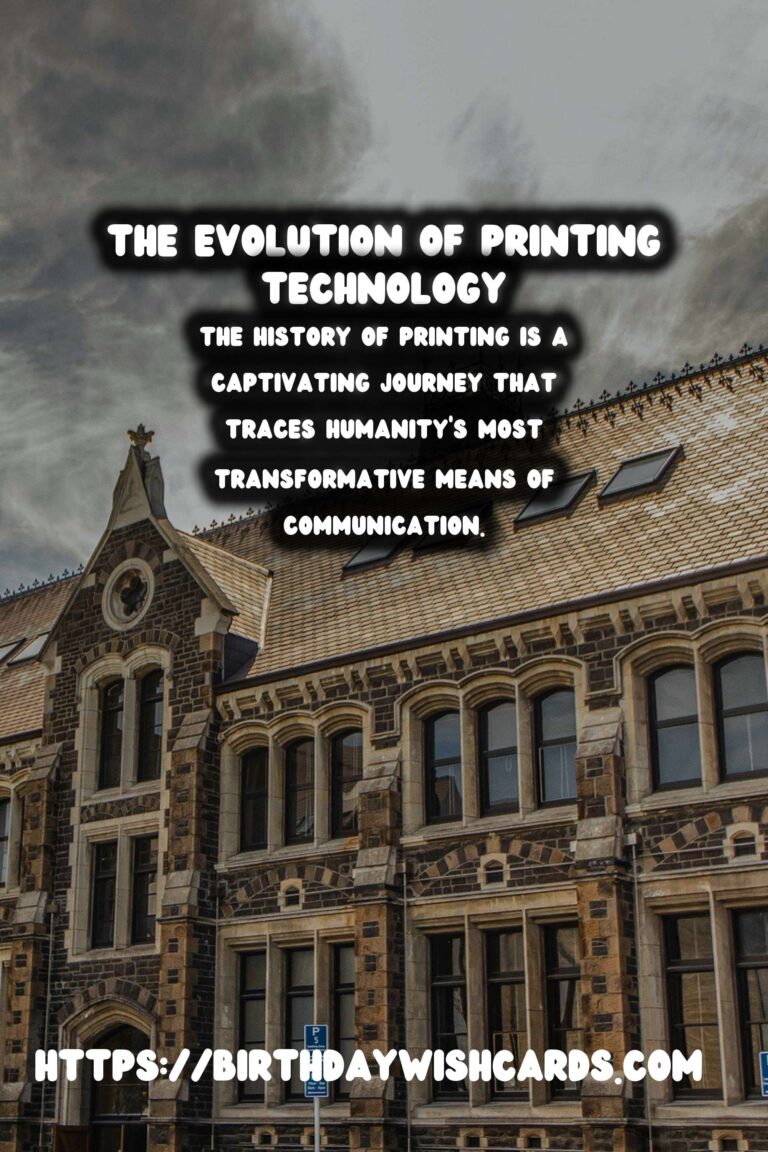
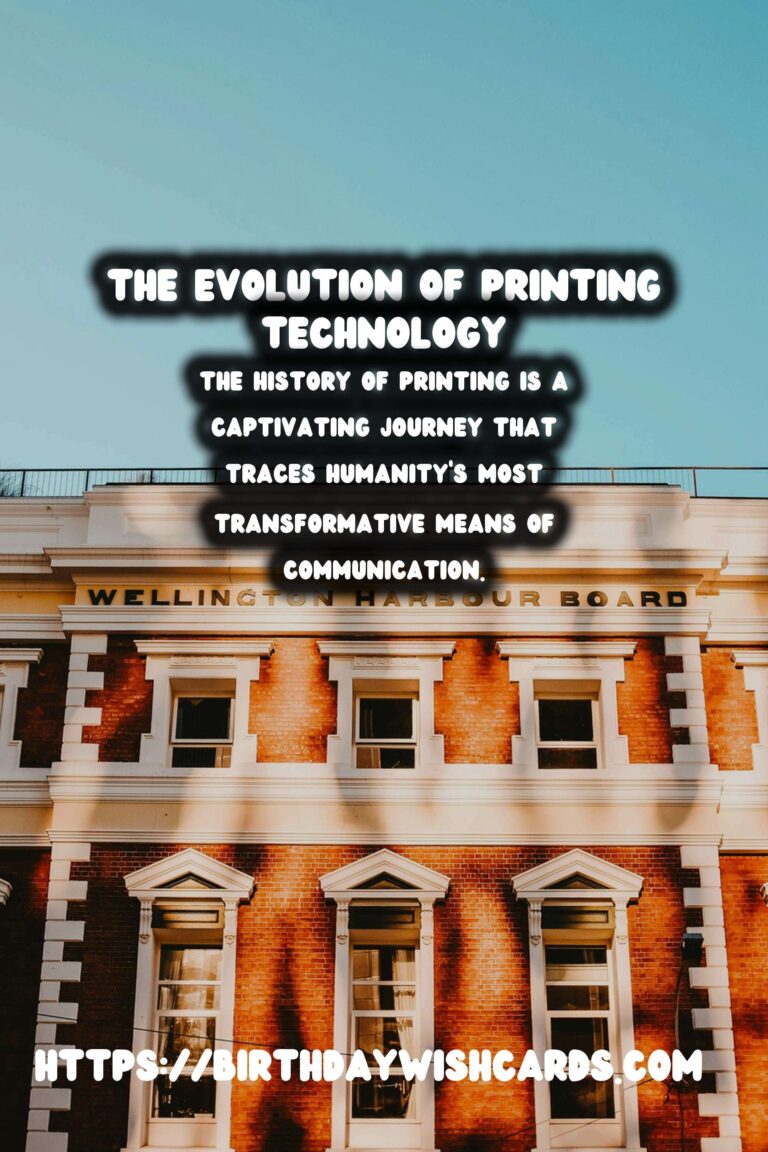

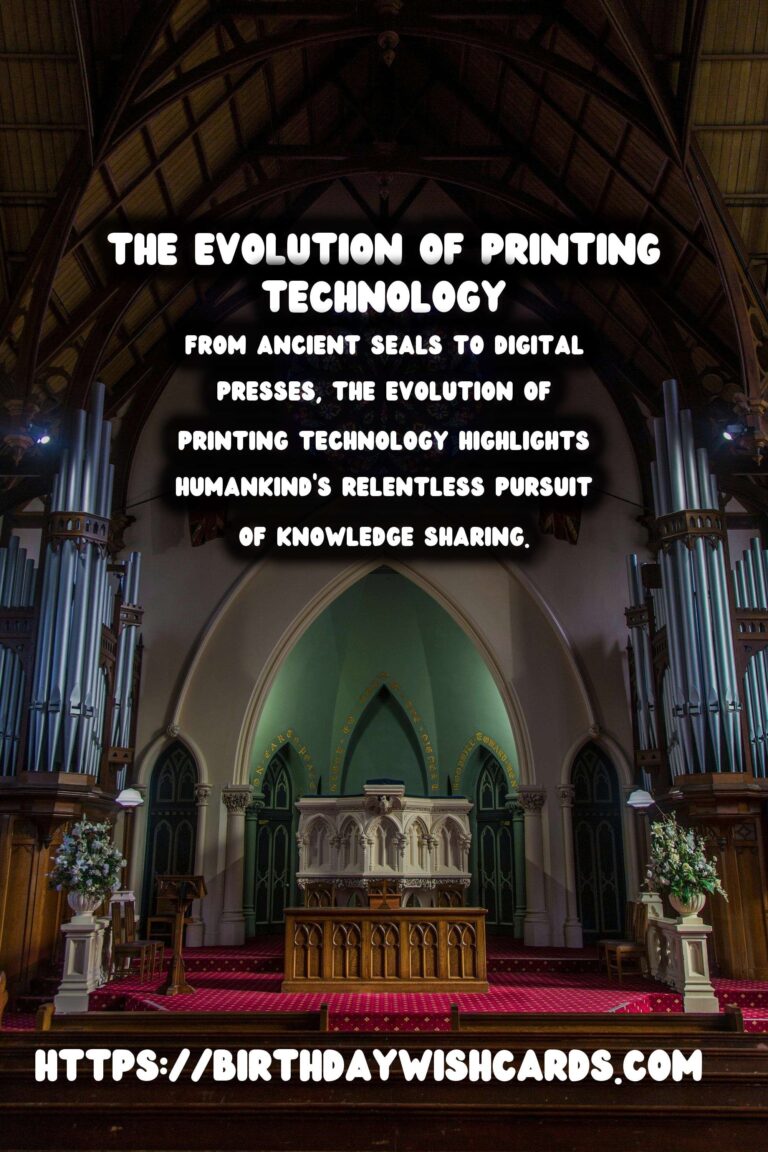
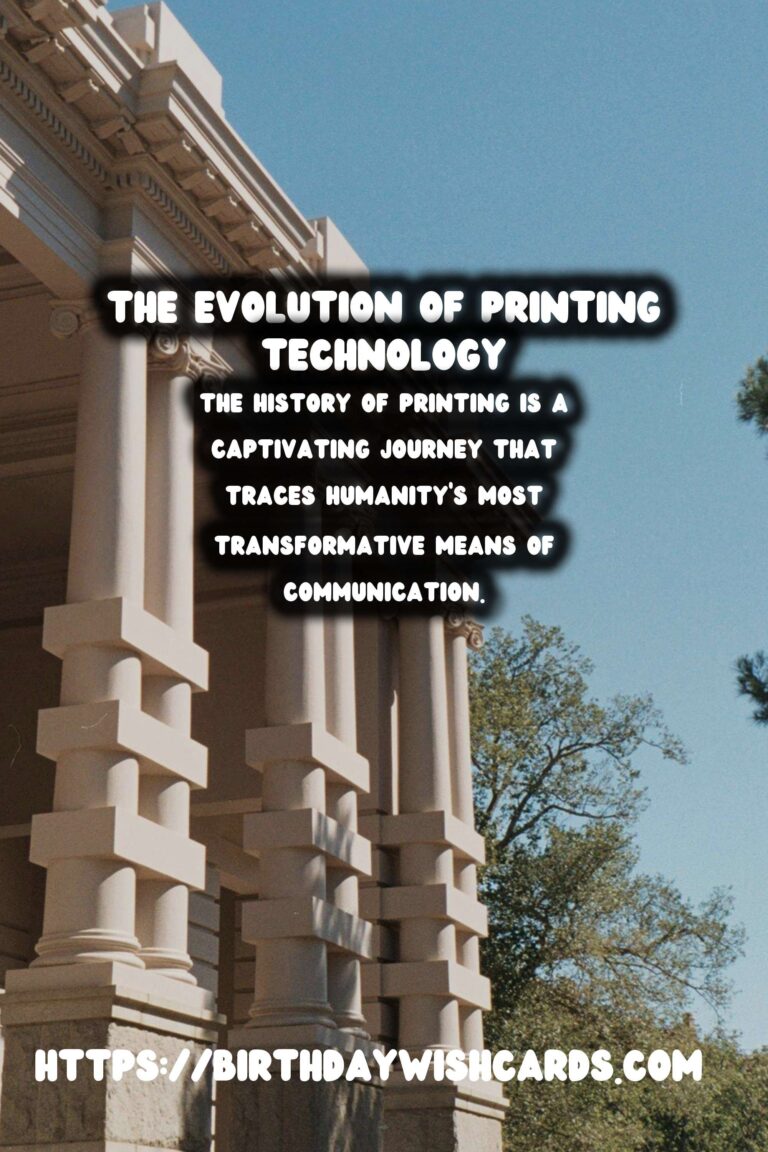

#PrintingHistory #KnowledgeDissemination




